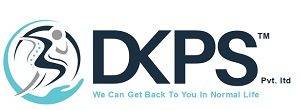- Home
- About Us
- DKPS Dealing
- BLOG
- Delhi NCR
- Delhi
- Physiotherapy at Home Near Me | Physiotherapist in South Delhi
- Best Chiropractor in Delhi
- Physiotherapist in Delhi
- Cupping Therapy in Delhi
- Home Nursing Services in Delhi
- Needle Therapy for Back Pain
- Sports Injury Physiotherapy
- Best Physiotherapist Visit at Home in Rohini Sector 24
- Physiotherapy at Home In Rohini Sector 9 |
- Physiotherapist in Pitampura | Physiotherapy at Home in Pitampura
- Physiotherapy at home in Rohini sector 29
- Physiotherapist in Paschim Vihar
- Physio home visit | Home Visit Physiotherapy |
- Physiotherapist in Saket | Best Physiotherapist in Saket |
- Physiotherapist In Janakpuri | Best Physiotherapist in Janakpuri |
- Best Physiotherapist in Punjabi Bagh | Punjabi Bagh Physiotherapist |
- Best Physiotherapist Service at Home in Dwarka, Delhi
- Best Physiotherapist in Chandigarh at Home Visit
- Faridabad
- Gurugram
- Noida
- Best Physiotherapy Gorakhpur
- Best Physiotherapist in Lucknow | Physiotherapist in Lucknow near me |
- Delhi
- Mumbai
- Delhi NCR
- Department
- Doctors
- Gallery
- Packages
- Contact Us
- Home
- About Us
- DKPS Dealing
- BLOG
- Delhi NCR
- Delhi
- Physiotherapy at Home Near Me | Physiotherapist in South Delhi
- Best Chiropractor in Delhi
- Physiotherapist in Delhi
- Cupping Therapy in Delhi
- Home Nursing Services in Delhi
- Needle Therapy for Back Pain
- Sports Injury Physiotherapy
- Best Physiotherapist Visit at Home in Rohini Sector 24
- Physiotherapy at Home In Rohini Sector 9 |
- Physiotherapist in Pitampura | Physiotherapy at Home in Pitampura
- Physiotherapy at home in Rohini sector 29
- Physiotherapist in Paschim Vihar
- Physio home visit | Home Visit Physiotherapy |
- Physiotherapist in Saket | Best Physiotherapist in Saket |
- Physiotherapist In Janakpuri | Best Physiotherapist in Janakpuri |
- Best Physiotherapist in Punjabi Bagh | Punjabi Bagh Physiotherapist |
- Best Physiotherapist Service at Home in Dwarka, Delhi
- Best Physiotherapist in Chandigarh at Home Visit
- Faridabad
- Gurugram
- Noida
- Best Physiotherapy Gorakhpur
- Best Physiotherapist in Lucknow | Physiotherapist in Lucknow near me |
- Delhi
- Mumbai
- Delhi NCR
- Department
- Doctors
- Gallery
- Packages
- Contact Us
Biceps Tendinitis
- Home
- Biceps Tendinitis

Biceps Tendinitis
Biceps tendonitis, also known as bicipital tendonitis, is a common condition that affects the tendons connecting the biceps muscle to the shoulder and elbow joints. This condition is often characterized by pain, weakness, and inflammation in the affected area, which can limit the range of motion and function. In this article, we will discuss the causes, symptoms, diagnosis, treatment, and prevention of biceps tendonitis.
Causes:
Biceps tendonitis is typically caused by overuse or repetitive strain on the tendons connecting the biceps muscle to the shoulder and elbow joints. This can occur due to a variety of activities that involve repetitive overhead arm movements, such as throwing a ball, swimming, or weightlifting. Other factors that may contribute to the development of biceps tendonitis include:
Aging: As we age, the tendons in our body become less flexible and more susceptible to injury and inflammation.
Poor posture: Poor posture can put additional stress on the biceps tendons, increasing the risk of injury and inflammation.
Shoulder impingement: Shoulder impingement occurs when the tendons and bursa in the shoulder joint become compressed, leading to inflammation and pain in the area.
Rotator cuff tears: Rotator cuff tears can cause changes in the mechanics of the shoulder joint, increasing the risk of biceps tendonitis.
Symptoms:
The symptoms of biceps tendonitis can vary depending on the severity of the condition but typically include:
Pain in the front of the shoulder may radiate down the arm.
Pain or tenderness in the elbow.
Weakness in the affected arm.
Stiffness or limited range of motion in the shoulder and/or elbow.
Clicking or popping sounds when moving the affected arm.
Diagnosis:
Biceps tendonitis is typically diagnosed through a physical exam, which may include a range of motion test to evaluate flexibility and strength in the shoulder and elbow joints. Your healthcare provider may also order imaging tests, such as an X-ray, ultrasound, or MRI, to evaluate the extent of the damage and rule out other conditions, such as a rotator cuff tear or arthritis.
The treatment for biceps tendonitis typically involves a combination of rest, physical therapy, and medication. In some cases, surgery may be necessary to repair the damaged tendons.
Rest: Resting the affected arm is crucial to allow the tendons to heal and reduce inflammation. This may involve avoiding activities that exacerbate symptoms and immobilizing the arm with a sling or brace.
Physical therapy: Physical therapy is often recommended to help improve the range of motion and strength in the affected arm. This may include exercises to stretch and strengthen the muscles and tendons in the shoulder and elbow joints, as well as techniques to improve posture and mechanics.
Medication: Over-the-counter pain relievers, such as ibuprofen or acetaminophen, may be recommended to help reduce pain and inflammation in the affected area. In some cases, corticosteroid injections may be recommended to reduce inflammation and pain.
Surgery: In severe cases, surgery may be necessary to repair the damaged tendons. This may involve reattaching the tendons to the bone or removing damaged tissue.
